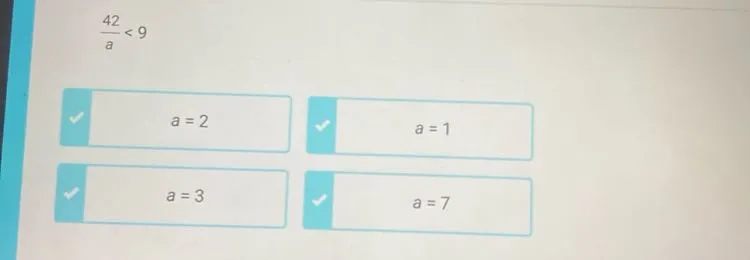Solve the inequality \(\frac{42}{a} < 9\) for the given values of \(a\).
Substitute \(a = 2\) into the inequality.
\(\frac{42}{2} < 9\) simplifies to \(21 < 9\), which is false.
Substitute \(a = 1\) into the inequality.
\(\frac{42}{1} < 9\) simplifies to \(42 < 9\), which is false.
Substitute \(a = 3\) into the inequality.
\(\frac{42}{3} < 9\) simplifies to \(14 < 9\), which is false.
Substitute \(a = 7\) into the inequality.
\(\frac{42}{7} < 9\) simplifies to \(6 < 9\), which is true.
\(\boxed{a = 7}\) is the only value that satisfies the inequality.
\(\boxed{a = 7}\) is the correct answer.

